The best way to capture UTM Parameters in Zoho Sales IQ
Here's the best way to capture UTM parameters in Zoho Sales IQ and send them to your CRM and other tools
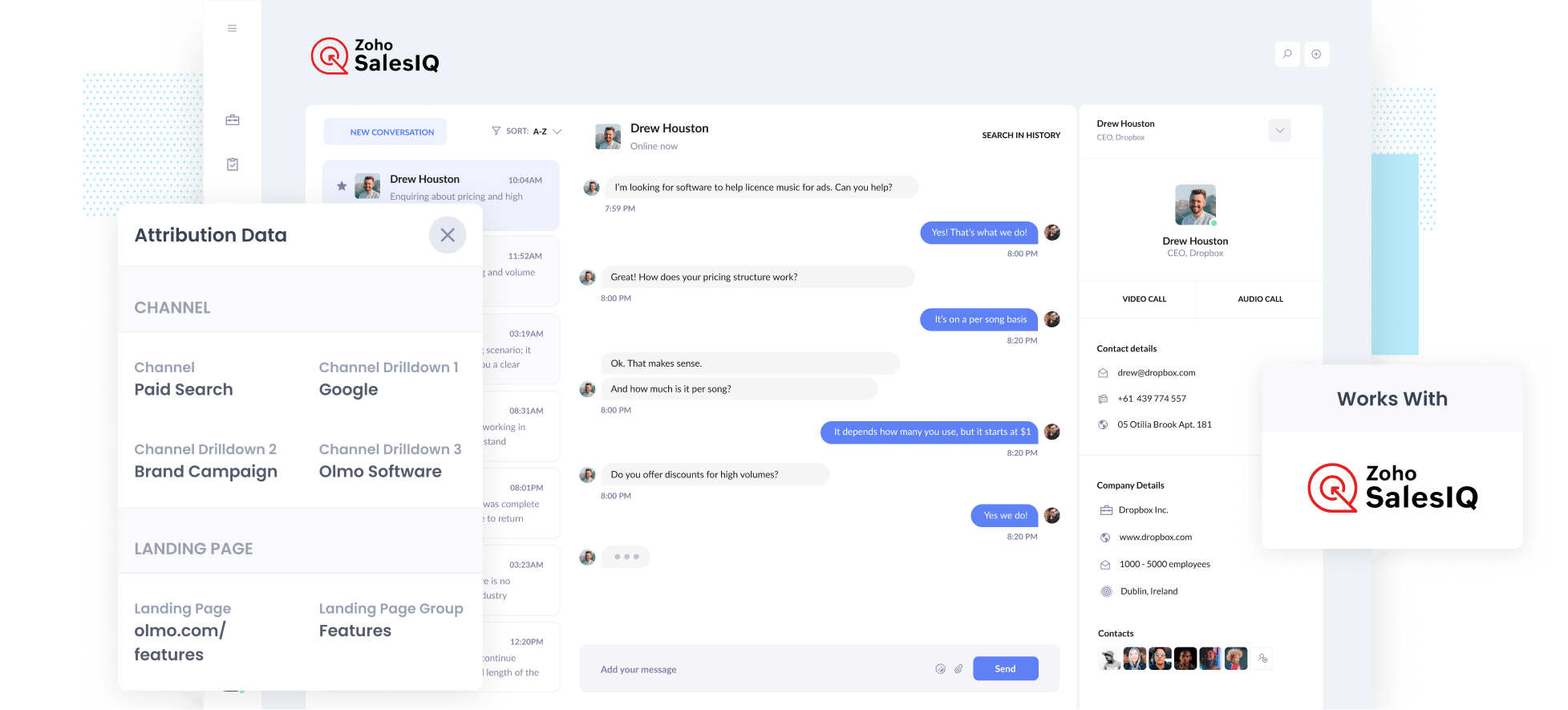
You’re running multiple marketing campaigns, but you can’t see which ones are bringing in real leads and customers.
It's a common problem. Tools like Google Analytics can tell you how many website visitors you get, but it can't tell you how many went on to become leads or customers (or how much revenue they generated).
But there is a way. With Attributer, you can track the source of your leads with each new chat in Zoho Sales IQ.
In this article, we’ll show you how to set it up, so you can finally have full visibility into which campaigns are driving the most leads and customers.
4 simple steps for capturing UTM parameters in Zoho Sales IQ
Attributer makes it easy to capture UTM parameters in Zoho Sales IQ. Here's how to do it in 4 simple steps:
1. Install Attributer on your website
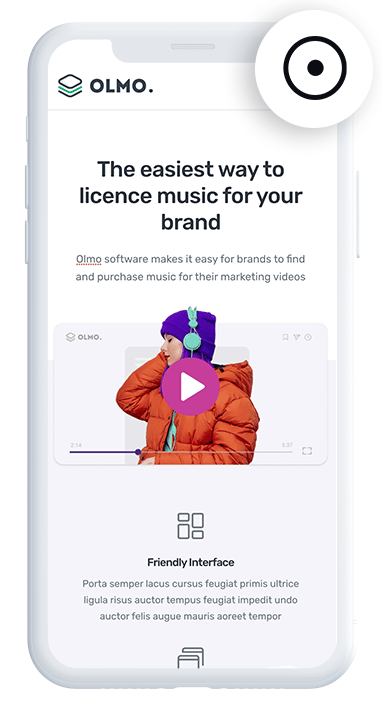
To get started, simply sign up for a free 14-day trial of Attributer. After signing up, you’ll receive a small snippet of code to add to your website.
The process of adding this code varies depending on your website platform. For most platforms, you can insert it through the Settings section or use a tag manager like Google Tag Manager. We’ve provided step-by-step guides, complete with screenshots, to help you add the code on popular platforms like WordPress, Wix, Squarespace, Webflow, and more.
Follow these instructions, and you'll have everything set up in no time.
2. Attributer tracks where your website visitors come from
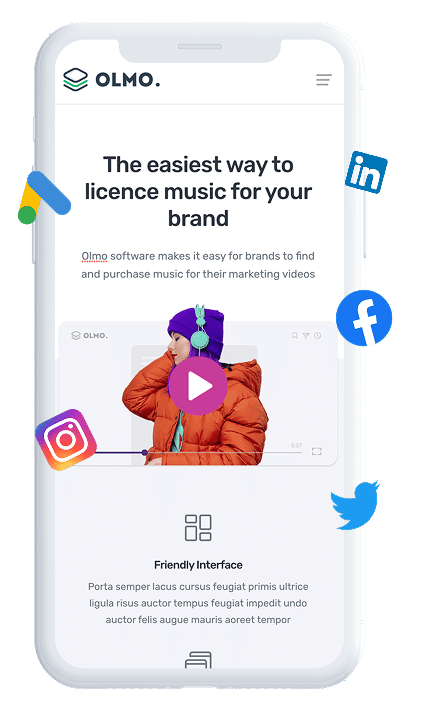
Once Attributer is installed, it immediately begins tracking the source of your website visitors and categorising them into channels, such as Paid Search, Paid Social, Organic Search, Display, and more (similar to what you’d see in Google Analytics).
The data is then stored in the visitor’s browser, ensuring that even if they explore other pages on your site or return after leaving, the UTM parameters they initially arrived with are retained and passed along, so you never lose track of their source.
3. UTM parameters are passed through with each new chat
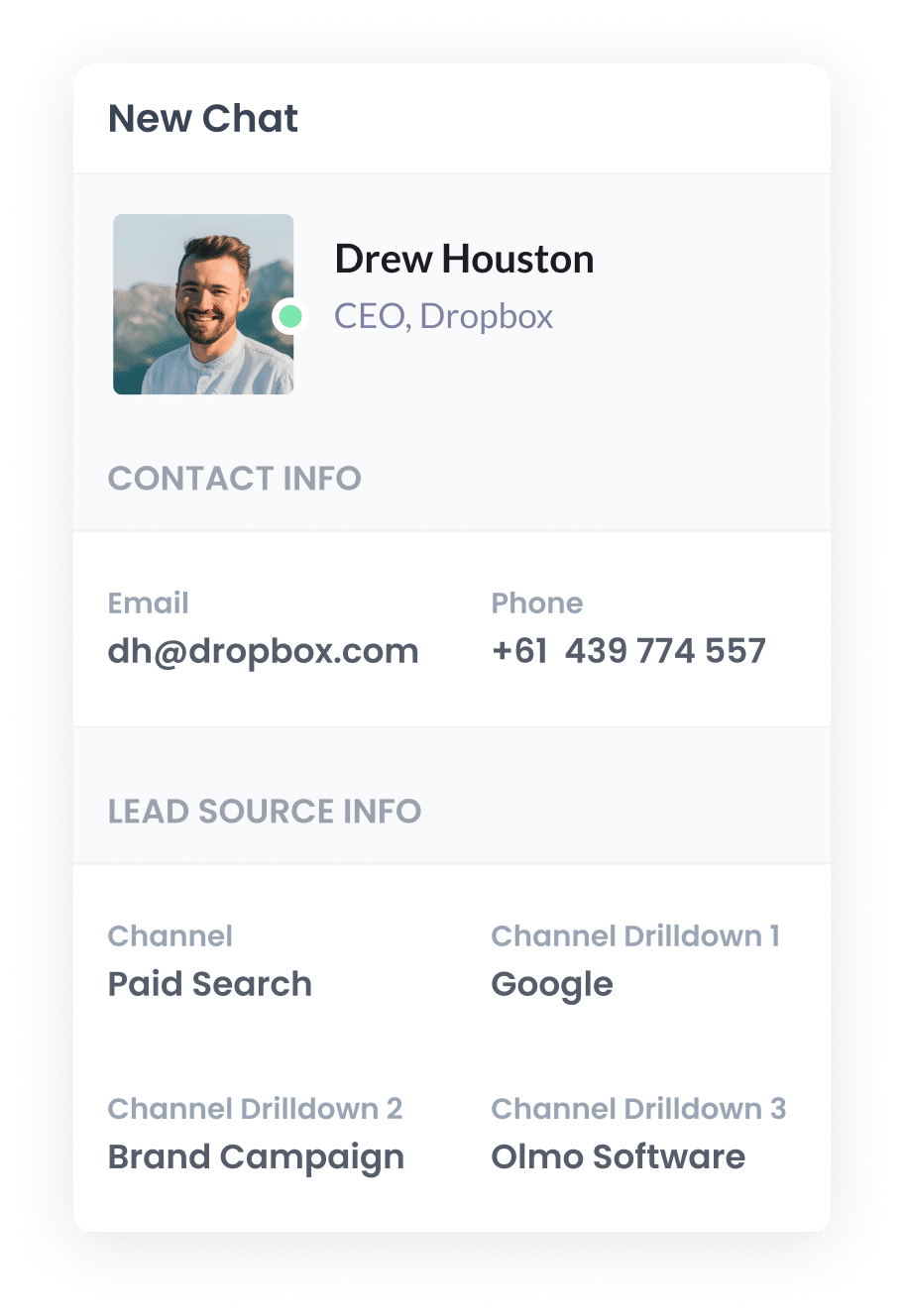
Then, when a visitor starts a new chat through Zoho SalesIQ, Attributer automatically passes the UTM parameters (and other attribution data) along with the chat.
Let’s imagine you’re a marketer at an IT company.
A potential customer clicks on one of your Facebook Ads, lands on the homepage, browses a few of your services pages, and then initiates a chat with your sales team to ask for more details.
Depending on the UTM parameters attached to the ad, Attributer would send the following information with the chat:
- Channel = Paid Social
- Channel Drilldown 1 = Facebook
- Channel Drilldown 2 = Microsoft Support Campaign
- Channel Drilldown 3 = Windows Support Ad
This allows you to track exactly where your leads are coming from, all the way down to the individual ad they interacted with.
4. Send the data to your CRM and other tools

With Attributer capturing the UTM parameters alongside each new chat in Zoho Sales IQ, you can do several things with this valuable data, such as:
- View UTM parameters and other attribution data directly within the chat window in Zoho Sales IQ.
- Send the data to your CRM tools like Salesforce, Hubspot, Pipedrive, Zoho CRM and more. You can then leverage your CRM’s reporting features to build charts & dashboards that show how many leads and customers you're getting from your various campaigns.
- Use tools like Zapier to send the data to Google Sheets or Excel. From there, you can easily filter and analyse it, or connect to advanced analytics platforms like Looker Studio (formerly Google Data Studio) or Power BI to build custom charts and dashboards.
Why Attributer is the best way to capture UTM parameters in Zoho Sales IQ
Here are 4 reasons why using Attributer is the best way to get UTM parameters into Zoho Sales IQ:
1. Captures all traffic
Attributer captures details on all your lead sources, not just those that come through paid ads with UTM parameters.
So whether someone finds you through Organic Social, Organic Search, Direct Traffic, or Referral, Attributer will still pass that information into Zoho SalesIQ.
This allows you to build comprehensive reports showing where every lead is coming from, not just the ones tied to your ad spend.
2. Remembers the data as visitors browse your site
Many other tools that capture UTM parameters need them to still be present in the URL when a chat starts. If the UTM parameters are gone, the data won’t make it into Zoho SalesIQ.
Here’s why this can be a problem: Someone clicks on one of your Facebook Ads and lands on your homepage. They then browse a few more pages on your website before starting a chat with your team. As they navigate away from the homepage, the UTM parameters are stripped from the URL, meaning Zoho SalesIQ won’t capture them when a new chat is started.
Attributer solves this by storing the UTM parameters in the visitor’s browser. So, even if they browse around before starting a chat (or leave your site and come back), the UTM parameters from their first visit are always remembered and passed through.
3. Provides cleaner data
UTM tagging can often become inconsistent over time, especially when different teams or agencies are managing your campaigns.
For instance, some of your Google Ads might be tagged as UTM_Source=Google, others as UTM_Source=google.com, and some might use UTM_Source=adwords. If you’re capturing raw UTM data for each chat and trying to generate reports on how many leads you get from your Google Ads, these would show up as separate sources.
But Attributer handles these inconsistencies for you. It’s designed to automatically categorise leads into the correct channel (such as Paid Search in this case), ensuring that your data stays clean and your reports are accurate.
4. Captures GCLID, FBCLID, MSCLKID and other information
In addition to capturing the UTM parameters behind your ads, Attributer can also capture pass-through click IDs (like the Google Click ID, Microsoft Click ID, and others) with each new chat.
This feature allows you to set up offline conversions in your advertising platforms by sending the click ID back when a visitor becomes a lead (or even when they convert into a customer).
On top of that, Attributer can also provide other useful attribution data, such as how long it took for a user to convert (i.e., the number of days between their first visit to your site and their first chat) and how many times they visited your site.
4 example reports you can run when you capture UTM parameters in Zoho Sales IQ
If you’re using Attributer to capture UTM parameters in Zoho SalesIQ, and you send that data into your CRM and other tools, you'll be able to run detailed reports showing which channels, campaigns, etc., are delivering the best results.
With over 15 years of experience leading marketing teams, I’ve spent millions on Google and Meta ads and have run countless reports to measure their effectiveness.
Here are four of the most insightful reports I’ve found useful over the years to help you get started:
1. Leads by Channel
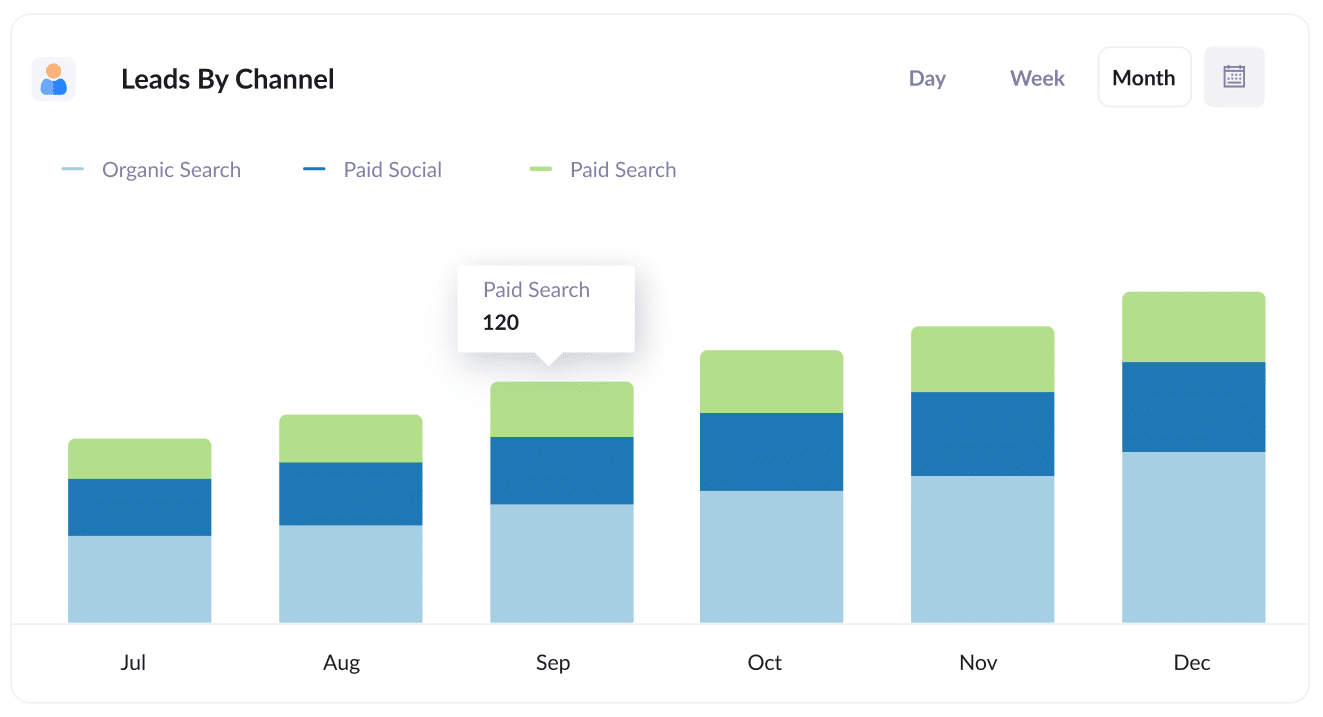
Since Attributer tracks the source of every lead (not just those from paid ads), you can easily create reports like this one that display monthly lead volume by channel.
This report helps you quickly identify which channels are performing well and where you should be focusing your time and budget.
For instance, if you notice that most of your leads are coming from Organic Search but the majority of your budget is allocated to Paid Search ads, it might be time to reconsider how you distribute your marketing spend.
2. Leads by Meta Ads Network
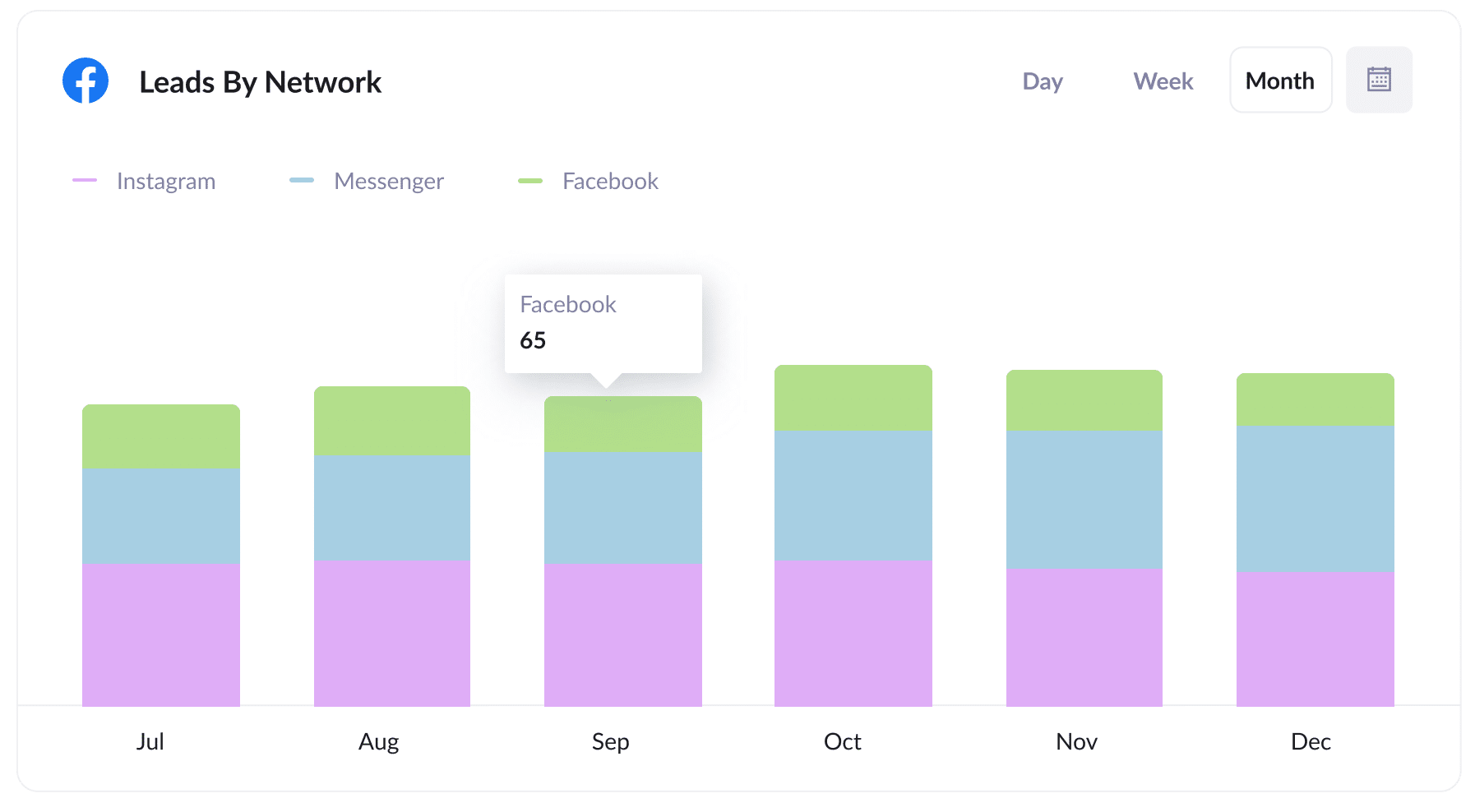
If you're running Meta Ads, your campaigns are likely being shown across various Meta platforms such as Facebook, Instagram, Messenger, and more.
This report helps you pinpoint exactly which network is generating the most leads for your business.
With this insight, you can be more strategic about how you allocate your budget, focusing on the platforms that drive the best results and ensuring you get the most out of your marketing spend.
3. Customers by Google Ads campaign
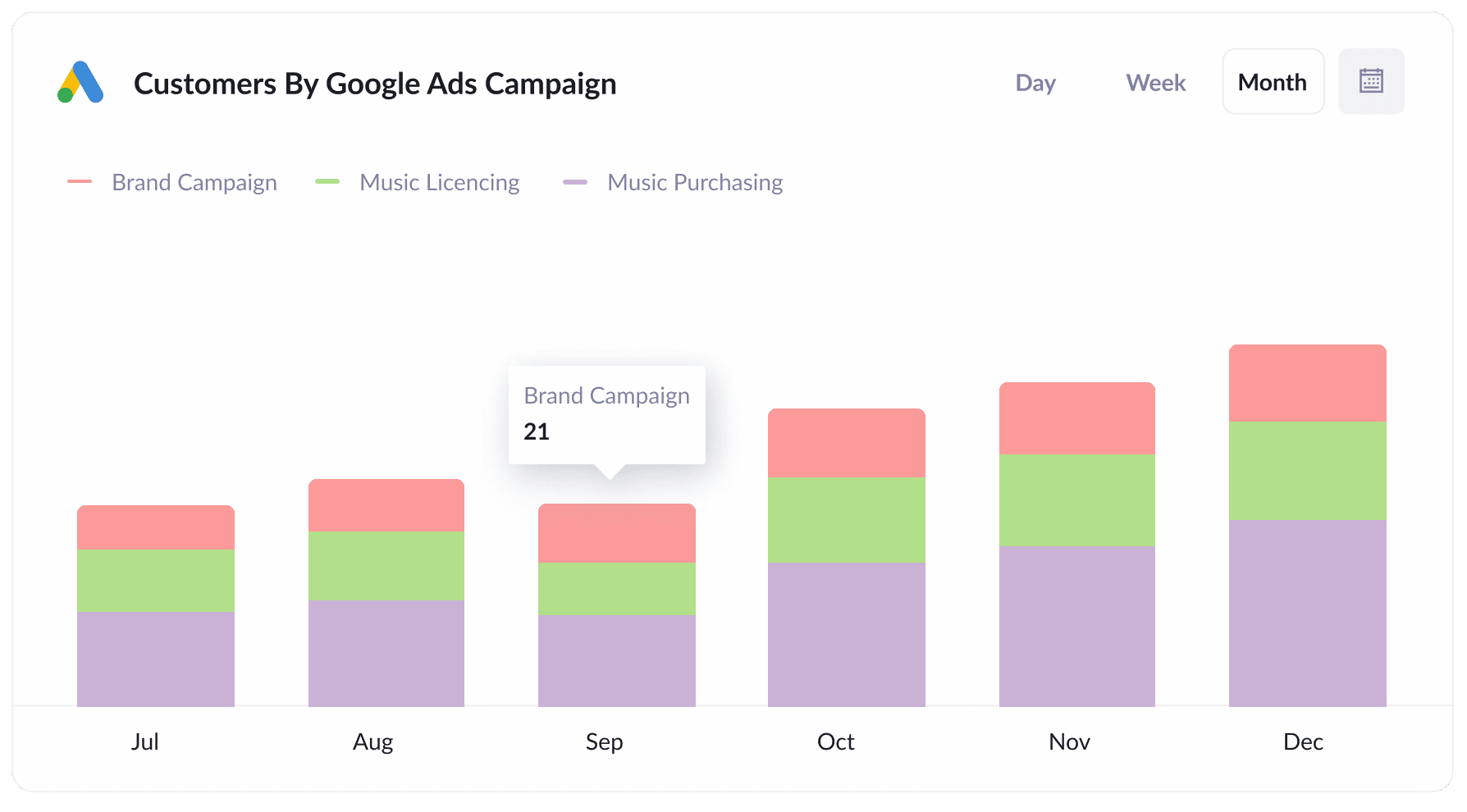
If your business is running multiple campaigns in Google Ads, then this report could be useful.
It breaks down how many customers you're gaining each month from each individual campaign, providing a clearer picture of what's working.
With this level of detail, you can make smarter decisions on where to allocate your budget (like investing more in the campaigns that are driving the best results and scaling back on the underperforming ones).
4. Revenue by Keyword
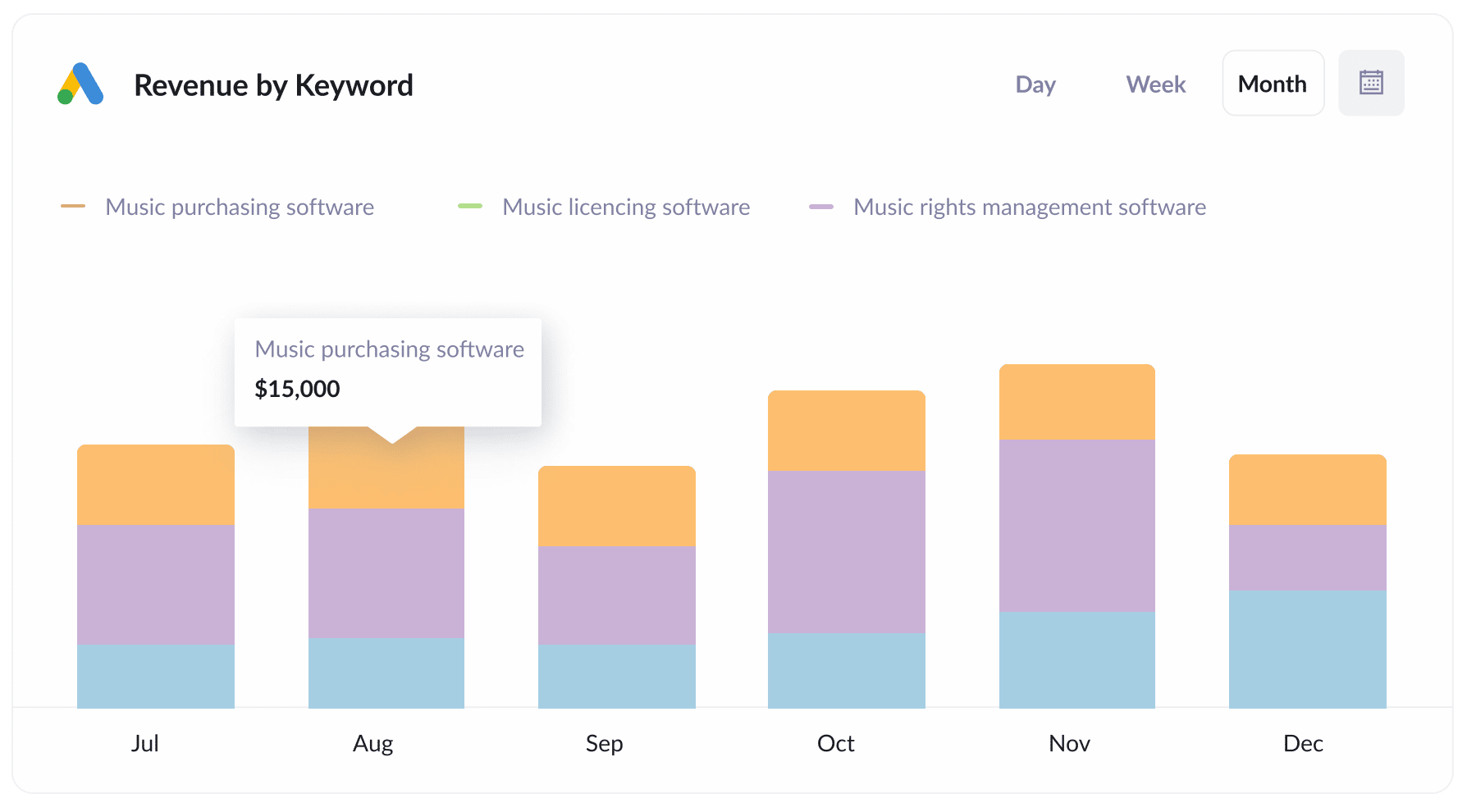
By adding the keyword to the UTM parameters in your Google Ads (something you can set up easily with tracking templates), you can capture the exact term a user searched for.
This gives you a clear picture of which keywords are delivering the most revenue for your business. With that insight, you can make smarter decisions on how to allocate your budget, such as increasing bids on the high-performing keywords to capture more impressions and clicks.
Wrap up
If you're looking to track UTM parameters in Zoho SalesIQ, Attributer is the perfect solution for you.
It captures the UTM parameters you put behind your ads and passes them into Zoho SalesIQ whenever a new chat is initiated.
It goes beyond paid ads too, capturing attribution data from organic sources like Organic Search and Organic Social, so you can see where all your leads and customers are coming from.
Want to test it out? Start your 14-day free trial today and see how Attributer can enhance your lead tracking in Zoho SalesIQ.
Get Started For Free
Start your 14-day free trial of Attributer today!

About the Author
Aaron Beashel is the founder of Attributer and has over 15 years of experience in marketing & analytics. He is a recognized expert in the subject and has written articles for leading websites such as Hubspot, Zapier, Search Engine Journal, Buffer, Unbounce & more. Learn more about Aaron here.
